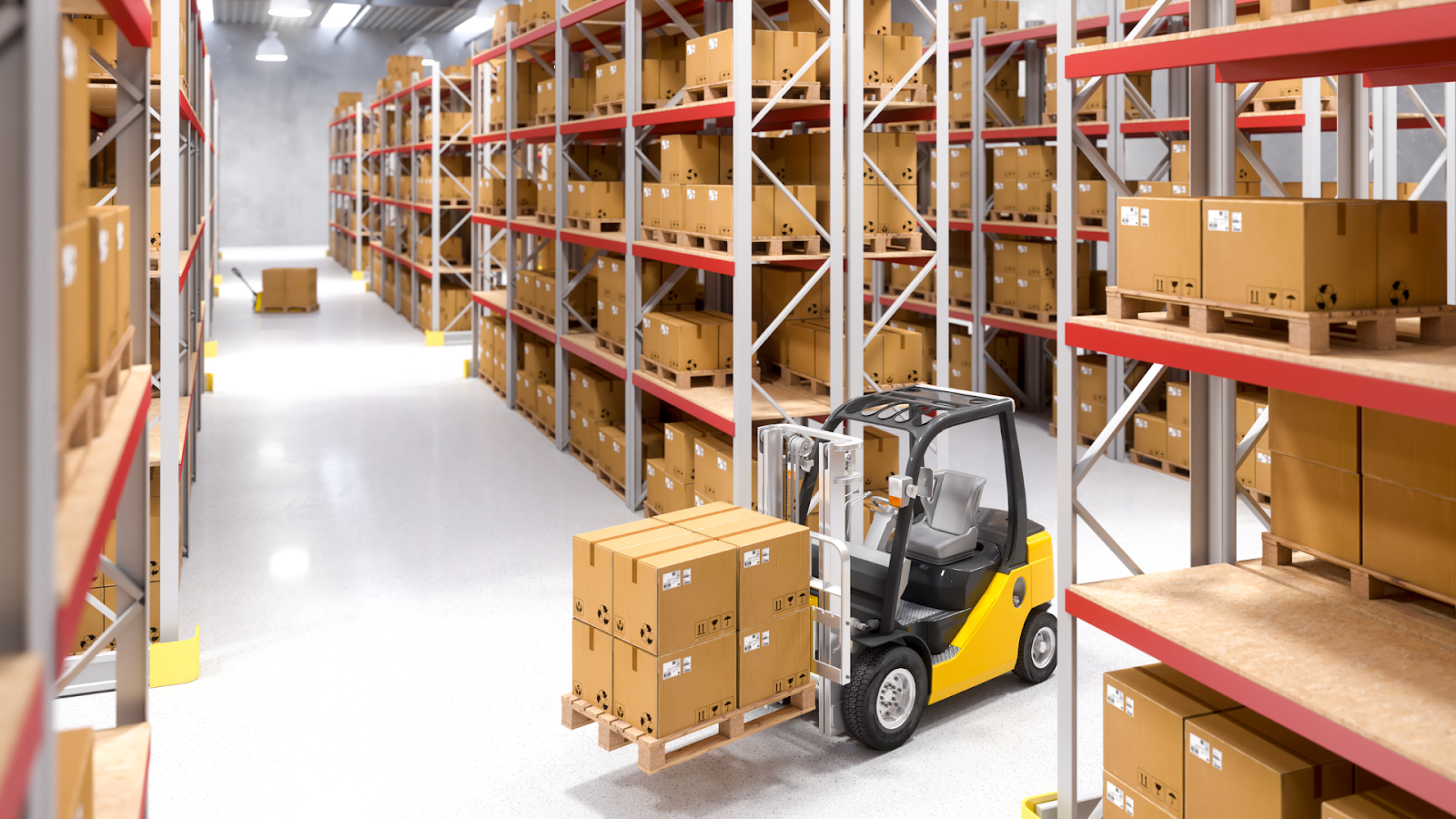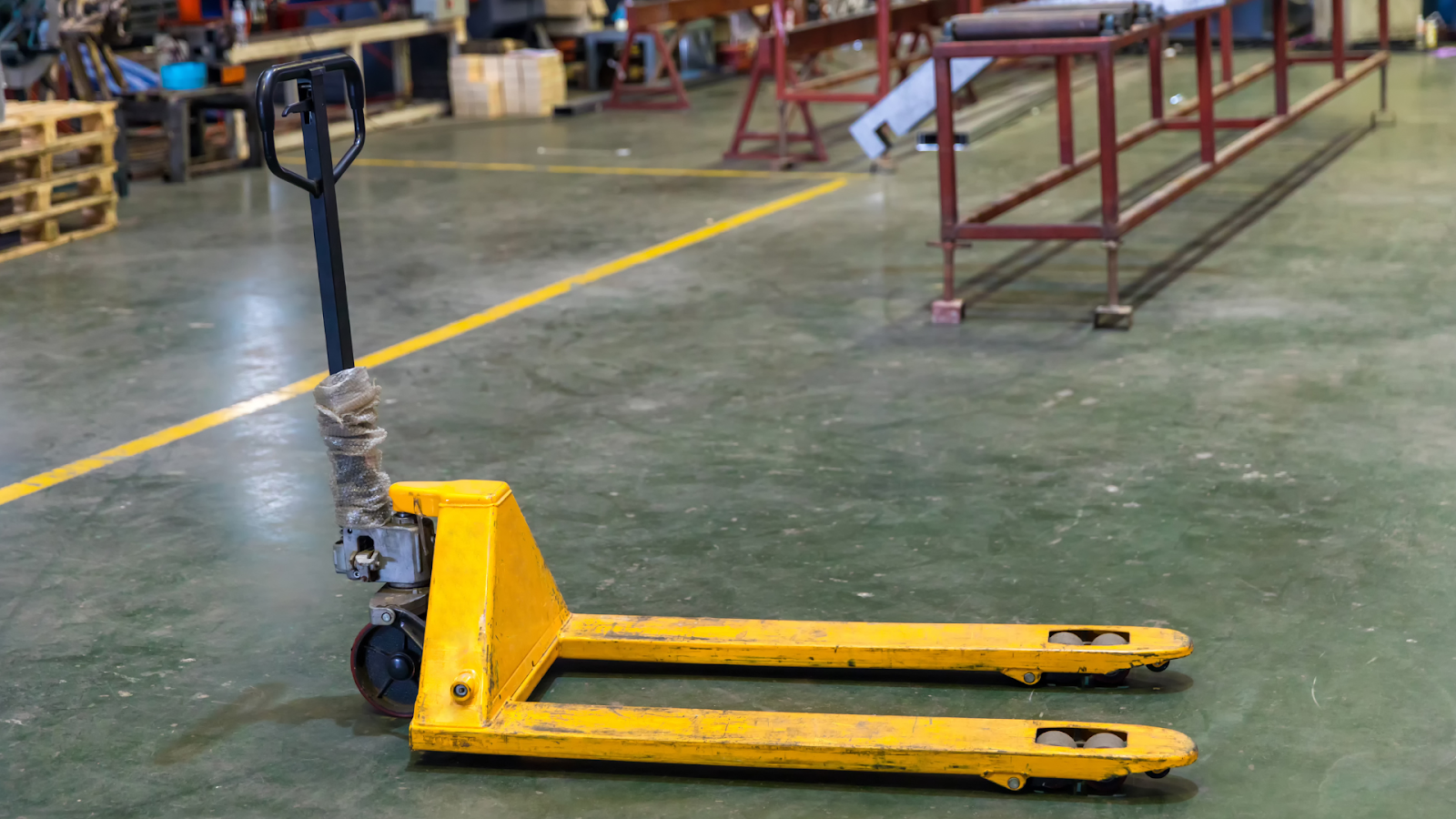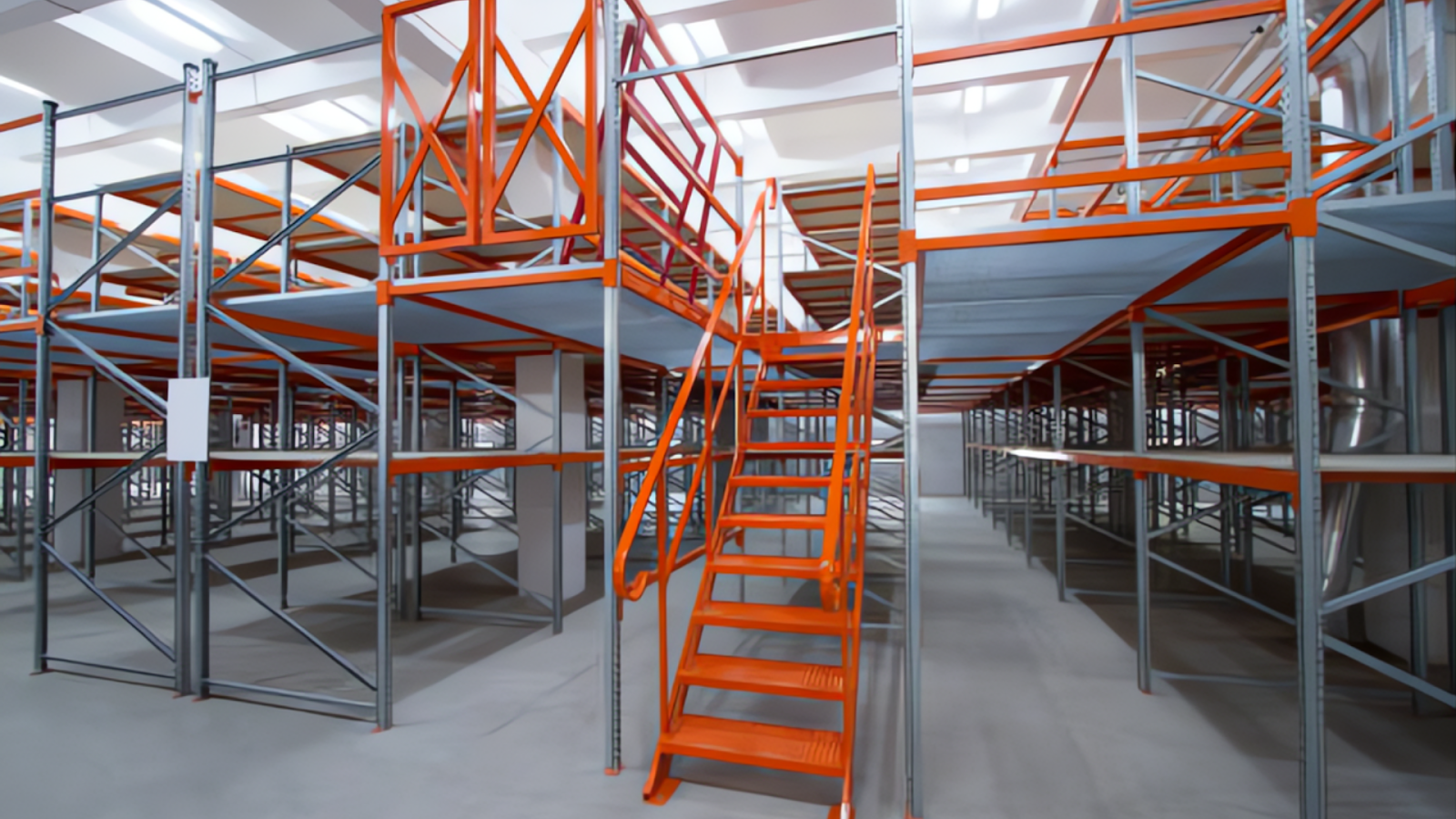Safety and efficiency are critical in any warehouse, and the right warehouse lift equipment makes a major impact. From moving heavy materials to ensuring quick access to higher levels, these machines provide essential support in warehouses and distribution centers.
The material handling equipment market in the United States is expected to reach a projected revenue of US$ 66.0 billion by 2030, highlighting the growing demand for effective warehouse lift solutions. To meet these needs, it’s important to understand the different kinds of warehouse lift equipment.
In this article, we will explore the various types of warehouse lift equipment, their benefits, and how to choose the right lift for your needs.
Warehouse lift equipment is a broad category of machines designed to move, elevate, and transport goods within a warehouse. These machines are engineered to handle materials of varying weights and sizes, reach different heights, and overcome obstacles, all while maintaining safety.
Some warehouse lifts are designed for heavy-duty tasks, while others cater to more delicate or light-duty lifting needs. The equipment is essential for simplifying warehouse operations, improving productivity, and reducing manual labor.

Warehouse lift equipment offers a wide array of advantages, from boosting efficiency to enhancing safety. Here's a look at how these tools can transform your operations.
With a clear view of what warehouse lift equipment is and its advantages, the next step is to examine the various types of warehouse lift equipment available to meet different operational needs.

Warehouse lift equipment can be broken down into several categories, each suited for different tasks within a warehouse. Below are the various types of warehouse lift equipment commonly found in warehouses and distribution centers.
A forklift is one of the most common and versatile warehouse lifts. It features two forks that lift and transport pallets, heavy goods, or materials. Forklifts are available in various configurations, including electric and gas-powered versions, to cater to different warehouse needs.
To complement your workflow, Source Equipment provides specialized lift solutions that make moving and positioning goods safer and faster. We distribute Presto Lifts’ Hydraulic, Pneumatic, and Light Duty Lifts, ensuring reliable handling in any warehouse center.
A side loader is ideal for handling long or bulky items that are difficult to move with a traditional forklift. As the name suggests, the forks are positioned on the side of the vehicle, allowing it to navigate narrow aisles with ease while lifting heavy loads.
Counterbalance forklifts are the most commonly used type of forklift. They feature a weight at the rear of the truck that balances the load being lifted. This lift equipment is ideal for lifting heavy loads in tight spaces, making it versatile in most warehouse settings.
Telehandlers, also known as telescopic handlers, combine the functionality of a forklift and a crane. The equipment features a telescoping boom, which extends and retracts, enabling it to reach high or distant places. Telehandlers are typically used for lifting heavy loads over obstacles and placing them at great heights.
A heavy-duty forklift is designed for lifting larger, heavier loads that exceed the capacity of standard forklifts. These machines are typically found in warehouses dealing with industrial goods, large machinery, and bulk materials.
Rough terrain forklifts are specifically designed for outdoor environments and uneven surfaces. These lifts feature large, rugged tires that can handle rough, muddy, or gravelly terrains.
Pallet jacks, or pallet trucks, are small, manual warehouse lifts used to move palletized goods across short distances. They come in both manual and electric versions, with the electric models allowing for effortless lifting and movement.
A walkie stacker is a type of lift truck that allows operators to walk behind the machine while stacking or retrieving goods. It is typically used for moving pallets in tight spaces and is an excellent solution for warehouses with low ceilings or narrow aisles.
Order pickers are specialized warehouse lifts used to retrieve individual items from shelves. The operator rides in a cage that moves up and down as they select items from high shelves.
Reach trucks are designed for narrow aisle storage and can extend the forks out to reach deep into racks. This warehouse lift equipment is ideal for storing goods in high-racking systems where traditional forklifts may not fit.
Boom lifts are used for reaching high places, often in situations where forklifts or other lifts cannot reach. They come in two primary variations:
Scissor lifts are ideal for elevating workers to higher levels for tasks like maintenance, inventory counting, or repairing equipment. These lifts raise workers vertically by extending a crisscrossing “scissor” mechanism.
Freight lifts are used for transporting goods between different levels of a building or warehouse. These lifts are specifically designed for lifting heavy, bulky items, such as pallets, boxes, and large machinery.
Aerial lifts are typically used for lifting workers and materials to elevated positions. Personnel Lifts (Mechanical Ladders) allow workers to reach high positions safely. They are commonly used for maintenance and repair work in warehouses.
Knowing the types of equipment helps you make informed decisions when choosing the right warehouse lift solutions for your facility.

Choosing the right warehouse lift equipment is critical for ensuring your operations are efficient and cost-effective. Follow these steps to select the best lift for your warehouse:
Consider the size, design, and storage arrangement of your warehouse. A narrow aisle forklift may be necessary for tighter spaces, while a rough terrain forklift might be better suited for outdoor areas.
Consider the weight and volume of materials you will be lifting. Heavy-duty forklifts or telehandlers may be necessary for larger loads.
Think about the conditions under which the equipment will operate. If your warehouse has a lot of outdoor work, a rough terrain forklift or telehandler might be required.
Ensure the lift you choose includes safety features such as load stabilizers, emergency brakes, and operator protection systems.
Make sure the equipment is easy to use and operate. The comfort of the operators will help prevent injuries and increase productivity.
Consider the frequency and cost of maintenance. Some lifts, like electric models, may require less maintenance than others, making them more cost-effective in the long term.
Once you’ve identified your needs, partnering with a reliable distributor like Source Equipment ensures you get the right solutions for your operations.

When it comes to optimizing warehouse operations, Source Equipment is your trusted distributor for high-quality warehouse lift equipment.
Partnering with leading manufacturers like Bison Lifting Equipment, EosLift, and Bayhead Products, Source Equipment distributes a variety of warehouse lift equipment to cater to different aspects of warehouse operations.
Here’s how their product store can enhance the efficiency, safety, and organization in your warehouse:
For smooth movement of goods between different warehouse levels, Source Equipment offers the following dock lifts:
These products allow for vertical lifting, making heavy lifting more efficient and safer. Source Equipment offers a variety of hydraulic and scissor lift tables:
Source Equipment offers customized lift tables for specific material handling tasks:
Source Equipment distributes high-quality Presto Lifts equipment designed to elevate goods and personnel:
With expert guidance and durable products, Source Equipment can help improve your efficiency, safety, and productivity.
Warehouse lift equipment plays a major role in improving the efficiency, safety, and productivity of warehouse operations. If you're handling light materials or heavy-duty lifting, understanding the various types of warehouse lifts can help you make the best decision for your needs.
For reliable and durable warehouse lift equipment, turn to Source Equipment. With an extensive catalog of products from dock lifts to custom lift tables from top manufacturers like Apollo Forklift and Presto Lifts, you can find the right solutions to enhance your warehouse operations.
Contact Source Equipment today to get started on optimizing your warehouse with the best warehouse lift equipment available.
Warehouse lift equipment is essential for moving, lifting, and positioning materials safely and efficiently within warehouses, distribution centers, and industrial environments. These lifts help streamline operations by reducing manual labor, increasing productivity, and ensuring safe handling of heavy or bulky items. Common uses include transporting goods to elevated storage locations, loading/unloading, and picking orders, making them an integral part of modern logistics and material handling systems.
To choose the right warehouse lift, consider factors such as the type and weight of the loads you’ll be moving, your warehouse layout, and the lift's lifting capacity. You should also assess the frequency of use and any special requirements such as height or reach. Additionally, consider compliance with local safety regulations and ergonomic needs to ensure the lift is safe, efficient, and compatible with your operational workflow.
The main types of warehouse lifts include forklifts, pallet jacks, order pickers, reach trucks, boom lifts, scissor lifts, lift tables, dock lifts, and vertical conveyors. Each type serves specific functions, such as moving pallets, lifting materials to high shelves, or accessing hard-to-reach areas. Selecting the right lift depends on your warehouse's layout, the types of goods handled, and your operational needs, ensuring efficiency and safety in material handling tasks.
Yes, lift tables, particularly hydraulic and scissor lift tables, are designed to handle heavy-duty operations in industrial and high-capacity settings. They can safely lift and position large, heavy loads, making them ideal for applications such as assembly, loading, and maintenance work. These lifts offer increased lifting heights and weight capacities, ensuring reliability and efficiency in environments with substantial material handling demands, while also promoting worker safety and productivity.
Yes, warehouse lift equipment such as reach trucks, order pickers, and vertical reciprocating conveyors are specifically designed for tight spaces, narrow aisles, and multi-level operations. These lifts allow for efficient material handling in confined areas, including mezzanines and high-density storage environments. With their compact size and ability to operate in tight aisles, these lifts optimize space utilization and improve productivity in warehouses with limited floor space or vertical storage needs.




Ready to Upgrade Your Process Operations?